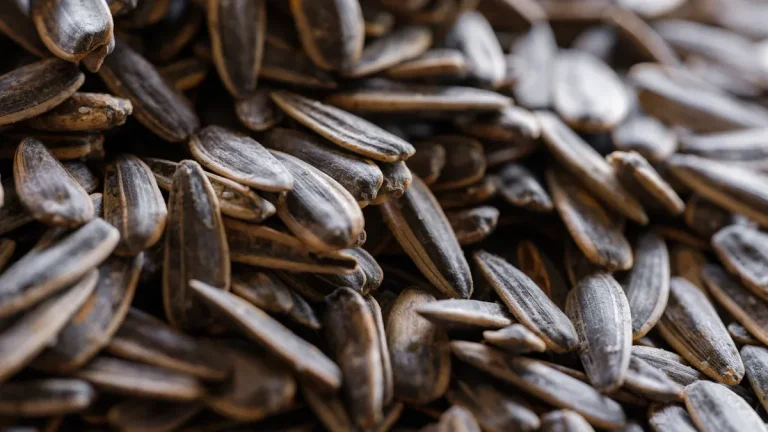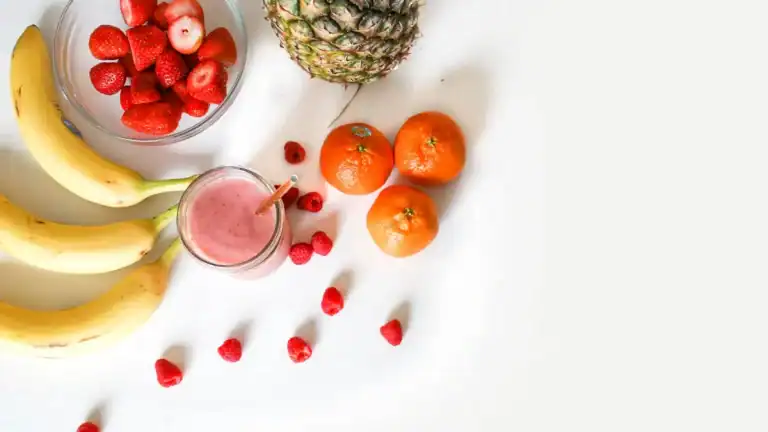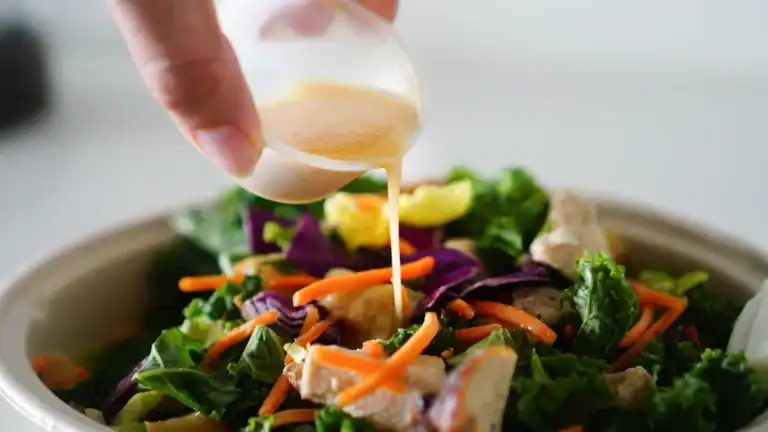
Gout is a painful form of arthritis. It happens when you have high uric acid levels in your blood. Your body creates purines naturally, and you also consume purines in food. When your body breaks down purines, it produces uric acid. Too much uric acid can form crystals in your joints, causing gout attacks. Globally, gout affects many adults. For instance, adults aged 70 and above saw a tripling of gout cases from 1990 to 2019.
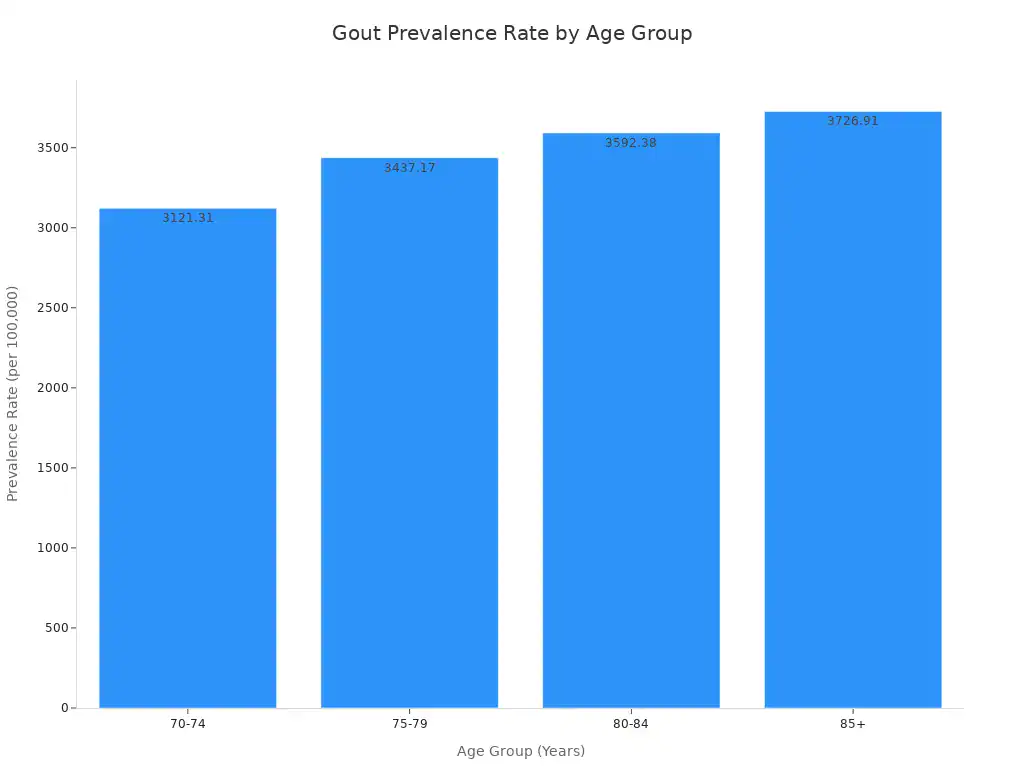
Diet plays a crucial role in gout management and preventing flare-ups. A low purine diet helps you reduce uric acid in your bloodstream. This type of diet can prevent and manage gout. This purine food chart will provide you with a comprehensive guide to low-purine eating.
Key Takeaways
- Gout is a painful joint problem caused by too much uric acid in your blood.
- Eating certain foods can make gout worse, like organ meats, some seafood, alcohol, and sugary drinks.
- A low-purine diet helps lower uric acid and prevent gout attacks.
- Good foods for gout include fruits, vegetables, whole grains, and low-fat dairy.
- Drinking plenty of water is important to help your body get rid of extra uric acid.
Gout and Purines Explained
What is Gout
Gout is a type of arthritis. It causes sudden, severe attacks of pain, swelling, redness, and tenderness in your joints. You often feel it in your big toe. These attacks can happen quickly. They reach their worst pain within 24 hours. You might find it hard to bear any touch or pressure on the affected joint.
Doctors diagnose gout using specific criteria. You must have at least one episode of swelling, pain, or tenderness in a joint. Finding monosodium urate (MSU) crystals in your joint fluid confirms gout. Other signs help doctors diagnose gout. These include:
- Rapid development of joint pain and redness.
- Pain or redness in your big toe.
- More than one attack of acute arthritis.
- High uric acid levels in your blood.
- Evidence of urate deposits, like a double-contour sign on ultrasound.
Purines and Uric Acid
Purines are natural substances. Your body makes them, and you also get them from certain foods. When your body breaks down purines, it creates uric acid. This uric acid is the final product of purine metabolism. Your body normally gets rid of uric acid through your urine. However, if you have too many purines, your body produces too much uric acid. This leads to high uric acid levels in your blood. These high uric acid levels can cause uric acid crystals to form in your joints. These crystals then trigger painful gout attacks.
You can check your uric acid levels. Here are typical ranges:
| Category | Uric Acid Range (mg/dL) |
|---|---|
| Adult males | 4.0–8.5 |
| Adult females | 2.7–7.3 |
| Children | 2.5–5.5 |
Diet’s Impact on Gout
Your diet plays a big role in managing gout. What you eat directly affects your uric acid levels. Certain foods increase the amount of purine your body processes. This raises your uric acid. A diet rich in purines can significantly increase your risk of gout attacks.
Some dietary patterns are strongly linked to more frequent gout flare-ups:
- Excessive alcohol consumption: Beer and spirits, especially binge drinking, raise uric acid.
- Diets rich in red meat and certain seafood: These foods contain high purine amounts.
- Sweets and sugary drinks: High-fructose corn syrup in these items can increase uric acid.
- Crash dieting: This can also unexpectedly raise uric acid levels.
Choosing a low purine diet helps you reduce uric acid. This diet helps in reducing uric acid in your bloodstream. It is a key part of managing your gout.
High-Purine Foods to Avoid
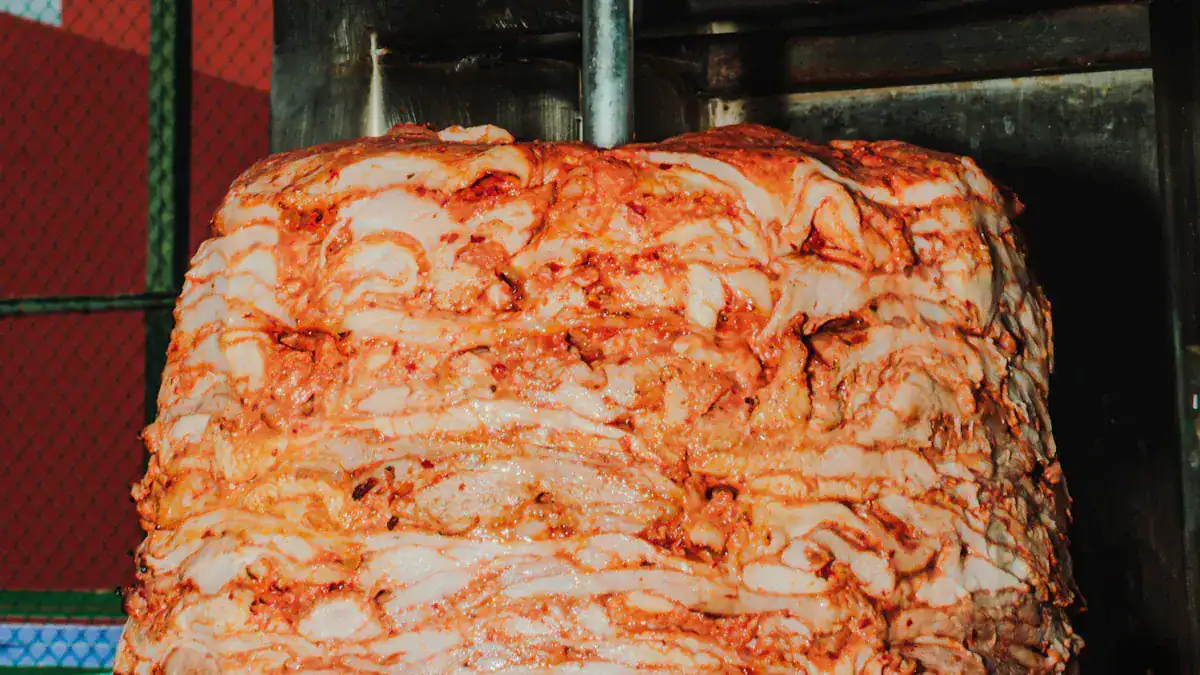
Your diet significantly impacts your risk of gout attacks. Eating many purine-rich foods can increase your uric acid levels. This can lead to a five-fold increase in gout attacks. Knowing which foods to avoid helps you manage your gout effectively. This purine food chart guides you on foods to limit or cut out.
Organ and Game Meats
Organ meats are among the highest purine foods. You should avoid them if you have gout. These include liver, kidney, and sweetbreads. Game meats like venison also contain high levels of purines. Organ meats, such as liver and kidney, have a purine content ranging from 150 to 1,000 mg per 100g. This high purine load directly increases the uric acid your body produces.
Certain Seafood
Some seafood also contains high levels of purines. You should limit or avoid these types of seafood.
- Anchovies and Sardines: These small fish are very high in purines.
- Mussels: Mussels are high in purines, similar to other shellfish. This includes lobster, crab, shrimp, and scallops.
Here is a look at the purine levels in some common seafood:
| Food Item | Preparation | Purine Level (mg per 3.5-oz serving) |
|---|---|---|
| Anchovies | Raw | 411 |
| Anchovies | Canned | 321 |
| Sardines | Canned | 399 |
| Sardines | Raw | 321 |
You can see that both anchovies and sardines have very high purine content. This makes them foods to avoid.
Alcohol and Sugary Drinks
Alcohol and sugary drinks are major contributors to high uric acid levels. You should limit or avoid them.
- Alcohol: All types of alcohol can interfere with your kidneys’ ability to remove uric acid. This causes more uric acid to stay in your body. Beer is especially high in purines. Its purine nucleoside, guanosine, breaks down into urate. This raises your serum uric acid levels. Even one beer daily can raise your serum uric acid by about 0.16 mg/dL. A six-pack could increase it by about 1 mg/dL. Brewer’s yeast and hops in beer are also rich in purines.
- The breakdown of ethanol in alcohol creates acids. These acids compete with uric acid for removal by your kidneys.
- Heavy drinkers (three or more drinks daily) have a 264% increased risk of gout compared to non-drinkers.
Here is how different types of alcohol impact your uric acid levels:
| Beverage Type | Impact on Serum Uric Acid Levels (mg/dl per serving per day) |
|---|---|
| Beer | 0.46 (Significant increase) |
| Liquor | 0.29 (Significant increase) |
| Wine | 0.04 (No significant increase) |
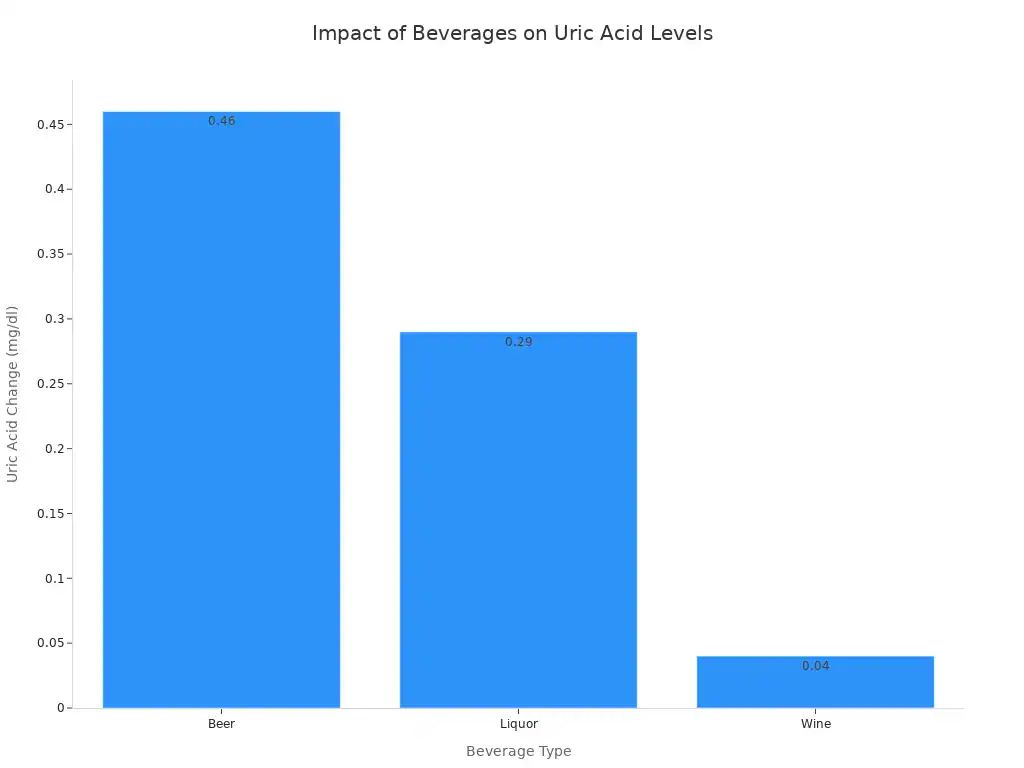
You can see that beer has the highest impact on your uric acid levels. Liquor also increases uric acid, but wine does not significantly.
- Sugary Drinks: Sugar-sweetened beverages (SSBs) are a strong risk factor for high uric acid and gout. These drinks often contain high-fructose corn syrup. Fructose can increase uric acid production. If you have a high body mass index (BMI), drinking many SSBs increases your risk of gout. Avoiding SSBs is important for preventing high uric acid and reducing your gout risk, especially if you are overweight or obese. Studies show that the highest SSB intake significantly increases your risk for gout.
Other Gout Aggravators
Some other foods and eating habits can make your gout worse, even if they are not high in purines.
- Very Spicy and Greasy Food: While spicy foods do not directly increase uric acid, they often come with other risk factors.
- You might eat spicy foods with purine-rich meats like mutton or fish. This leads to too much purine intake.
- Spicy food consumption can increase your carbohydrate intake. This may lead to a higher BMI and weight gain. Fat accumulation contributes to too much uric acid production.
- Chili sauce and chili oil in spicy dishes can lead to high fat intake. This raises your blood lipid levels. High blood lipids can increase uric acid production.
- People who eat spicy foods often drink more alcohol. Alcohol promotes uric acid synthesis and hinders its removal.
- Coffee and Excess Tea: While coffee and tea are generally low in purines, drinking too much can sometimes affect gout. More research is needed to fully understand their impact.
- Deeply Fried Food: The evidence does not directly link deeply fried foods to increased uric acid production. However, these foods are often high in unhealthy fats. They can contribute to weight gain and other health issues that indirectly affect gout management.
You should focus on a low purine diet. This helps you manage your gout and avoid painful gout attacks.
Low-Purine Foods to Eat
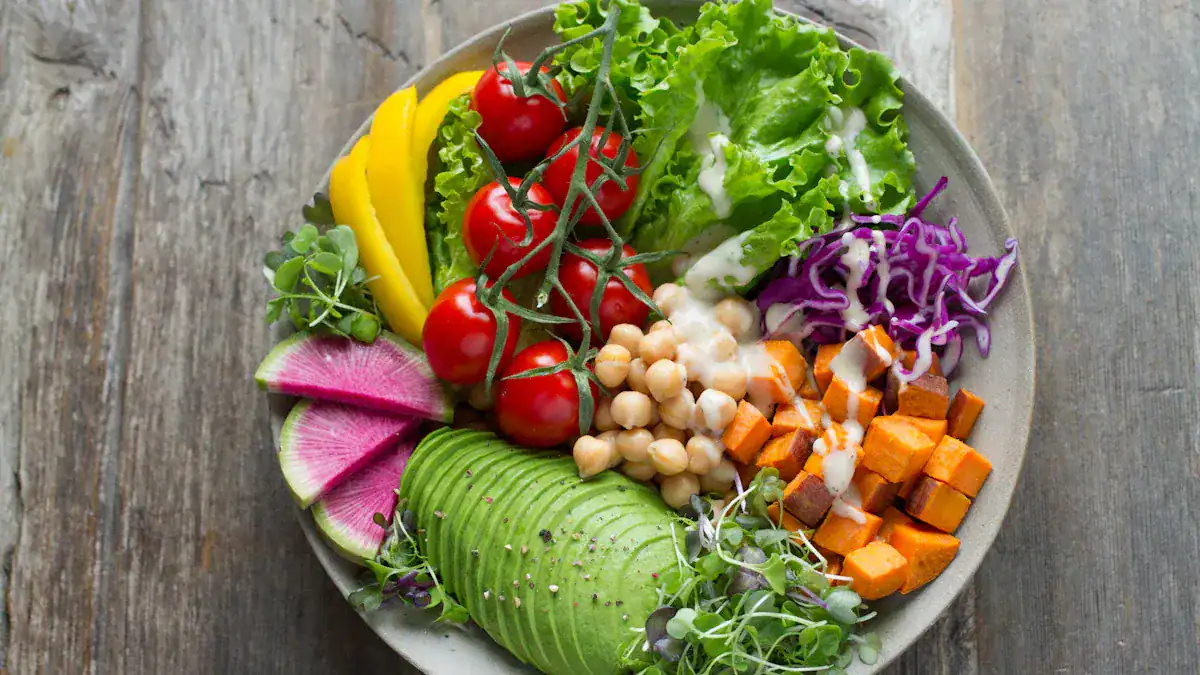
Low-Purine Foods to Eat
Eating the right foods helps you manage gout. A low-purine diet focuses on foods that help keep your uric acid levels low. This diet is a powerful way to prevent gout flare-ups. You can still enjoy a variety of nutritious and delicious foods. The information below will guide you in making smart food choices for better health.
- Lean Proteins
You can still eat protein while managing gout. Choose lean protein sources and eat them in moderation. Fish and chicken are good choices. Aim for about 4 to 6 ounces per day. Chicken breast is a moderate-purine food, containing about 170 to 230 mg of purines per 100 grams. Foods with 200 mg or more are considered high in purines, so chicken is on the lower side of moderate. Plant-based proteins like lentils, beans, and tofu are excellent alternatives. These options provide great nutrition without high purine levels.
- Fruits and Vegetables
Fruits and vegetables are especially helpful when dealing with gout. Most fruits are low in purines and may help reduce uric acid levels. They also provide vitamin C, which supports lowering uric acid.
Cherries, especially tart cherries, contain anthocyanins that reduce inflammation. Eating at least 10 cherries daily has been shown to lower gout attack risk by up to 35%. Drinking tart cherry juice (8 ounces unsweetened) may also help reduce uric acid.
Berries like blueberries, strawberries, and raspberries are rich in vitamin C and antioxidants. Kiwi also provides a high amount of vitamin C, even more than two oranges per serving. Citrus fruits such as oranges, lemons, and grapefruit help lower uric acid and improve hydration. Getting 500 mg of vitamin C daily may reduce gout risk. Pineapple also provides vitamin C and contains bromelain, which may help reduce inflammation.
Many vegetables are also low in purines and helpful for gout management. Bell peppers are rich in antioxidants and vitamin C. Cucumbers contain lots of water, helping flush out toxins. Tomatoes contain antioxidants like lycopene and vitamin C, supporting inflammation reduction. Bitter gourd can naturally lower uric acid. Carrots are high in fiber, which helps the body remove uric acid. Spinach can be eaten in moderation and may help reduce uric acid levels.
- Whole Grains and Dairy Products
Whole grains and dairy foods also support a low-purine diet. Brown rice, quinoa, and oats can help lower uric acid. Oats contain about 50 to 100 mg of purines per 100 grams, which is considered low to moderate. Brown rice has even less.
Low-fat dairy products are especially beneficial. Milk is low in purines and helps the kidneys remove uric acid. Milk proteins, such as casein and whey, support lowering uric acid levels by helping the body excrete it through urine. Following a diet such as the DASH diet, which includes low-fat dairy, may reduce the risk of gout attacks.
- Hydration and Water Intake
Drinking plenty of water is essential for managing gout. Water helps your body remove excess uric acid through urine and reduces the risk of kidney stones. Aim to drink at least eight glasses of water per day. During gout flare-ups, increasing water intake to about 16 glasses a day may help flush uric acid from your system.
Studies show that people who drink more than eight glasses of water daily have nearly a 48% lower risk of gout attacks. Those who drink five to eight glasses daily still see about a 43% reduction. Dehydration increases uric acid, which can worsen gout, so keeping your body well-hydrated is very important.
Your Low-Purine Diet Plan
You can manage your gout effectively with a well-planned low purine diet. This section gives you practical meal ideas. You can enjoy delicious and satisfying foods while keeping your uric acid levels in check.
Breakfast Ideas
Start your day with delicious, low-purine options. These meals help manage your uric acid levels.
- Eggs & Grapefruit Breakfast Box: This meal gives you vitamin C. Vitamin C helps your kidneys remove uric acid. This lowers your gout risk.
- Stone Fruit Salad with Cottage Cheese: Low-fat dairy, like cottage cheese, helps prevent gout attacks. It reduces uric acid in your blood. Cottage cheese is a nutritious, low-fat, protein-packed choice.
- Chocolate Cherry Overnight Oats: Cherries have anthocyanins. These compounds fight inflammation. They are a great breakfast addition.
- Iced Coffee Breakfast Smoothie: Drinking coffee regularly links to a lower risk of gout. It helps flush uric acid from your body.
- Squash Baked Egg: Eggs and dairy have almost no purines. They benefit people with high uric acid and gout.
- Breakfast Salad with Soft Boiled Egg: This option includes vitamin E. Vitamin E is an antioxidant. It protects joints by removing inflammation-causing compounds.
- Cinnamon Keto Porridge: This porridge contains plant-based omega-3 fatty acids from flaxseed. These can ease joint stiffness and pain from inflammatory arthritis.
- Lemon Tart Smoothie: This smoothie is full of vitamin C, calcium, and fiber. It also provides a lot of protein.
- Pineapple Turmeric Cauliflower Porridge: Turmeric has curcumin. Curcumin acts as an antioxidant. It helps reduce inflammation.
Lunch Ideas
For lunch, focus on balanced meals. You can combine lean proteins with plenty of vegetables and whole grains.
- Chicken Salad Sandwich: Use shredded chicken breast on whole-grain bread. Add lots of lettuce, tomato, and cucumber. Use a light, low-fat dressing.
- Quinoa Bowl: Mix cooked quinoa with roasted vegetables like bell peppers, zucchini, and spinach. Top it with a small portion of grilled tofu or chicken.
- Large Green Salad: Make a big salad with mixed greens, carrots, and cherry tomatoes. Add chickpeas or a hard-boiled egg for protein. Use a vinaigrette dressing.
Dinner Ideas
Your dinner can be satisfying and low in purines.
- Baked Salmon with Brown Rice: Bake a small piece of salmon. Serve it with brown rice and steamed green beans or broccoli.
- Vegetable Stir-fry: Stir-fry a variety of vegetables like bok choy, snap peas, and carrots. Use a low-sodium sauce. Add a small amount of lean chicken or shrimp.
- Lentil Soup: Prepare a hearty lentil soup with plenty of vegetables. Serve it with a slice of whole-grain bread.
Healthy Snacks
When you need a snack, choose options that support your low purine diet. This purine food chart helps you pick wisely.
- Fruits: Enjoy a cup of fresh cherries, melon, or berries. These are naturally low in purines.
- Vegetables: Snack on raw carrots, celery sticks, or bell pepper slices. Leafy greens like spinach and kale are also good.
- Dairy: Have low-fat yogurt or a small amount of low-fat cheese like mozzarella. Skim milk is also a good choice.
- Whole Grains: A small bowl of whole oats or a few whole-grain crackers can be a good option. Quinoa and brown rice are also good.
- Nuts: A handful of almonds or walnuts provides healthy fats.
- Tofu: Tofu is a versatile, low-purine protein source.
Adopting a low-purine diet helps you manage your gout. You can reduce flare-ups and improve your quality of life. This diet lowers uric acid levels. It prevents new crystal formation. This reduces gout attacks. While a low-purine diet is a powerful tool for immediate management, it is part of a broader gout treatment plan. For long-term health, consider wider dietary patterns like the Mediterranean or DASH diets. Always consult your healthcare provider or a registered dietitian. They give personalized advice. You can take control of your gout through informed dietary choices.
FAQ
What is a low-purine diet?
A low-purine diet helps you manage gout. You reduce foods high in purines. This lowers your body’s uric acid production. It helps prevent painful gout attacks. You focus on fruits, vegetables, whole grains, and low-fat dairy.
What foods are low in purines?
You can enjoy many foods on a low-purine diet. These include fresh fruits like cherries and berries. Most vegetables, whole grains, and low-fat dairy are also good choices. Lean proteins like chicken breast and certain fish are fine in moderation.
What happens if you do not follow a low-purine diet?
If you do not follow a low-purine diet, your uric acid levels can stay high. This increases your risk of gout flare-ups. You may experience more frequent and painful joint attacks. High uric acid can also lead to other health issues.
What is the best way to start a low-purine diet?
Start by identifying high-purine foods you currently eat. Gradually replace them with low-purine options. Focus on hydration and drink plenty of water. Consult your doctor or a dietitian for personalized advice. They help you create a suitable plan.


